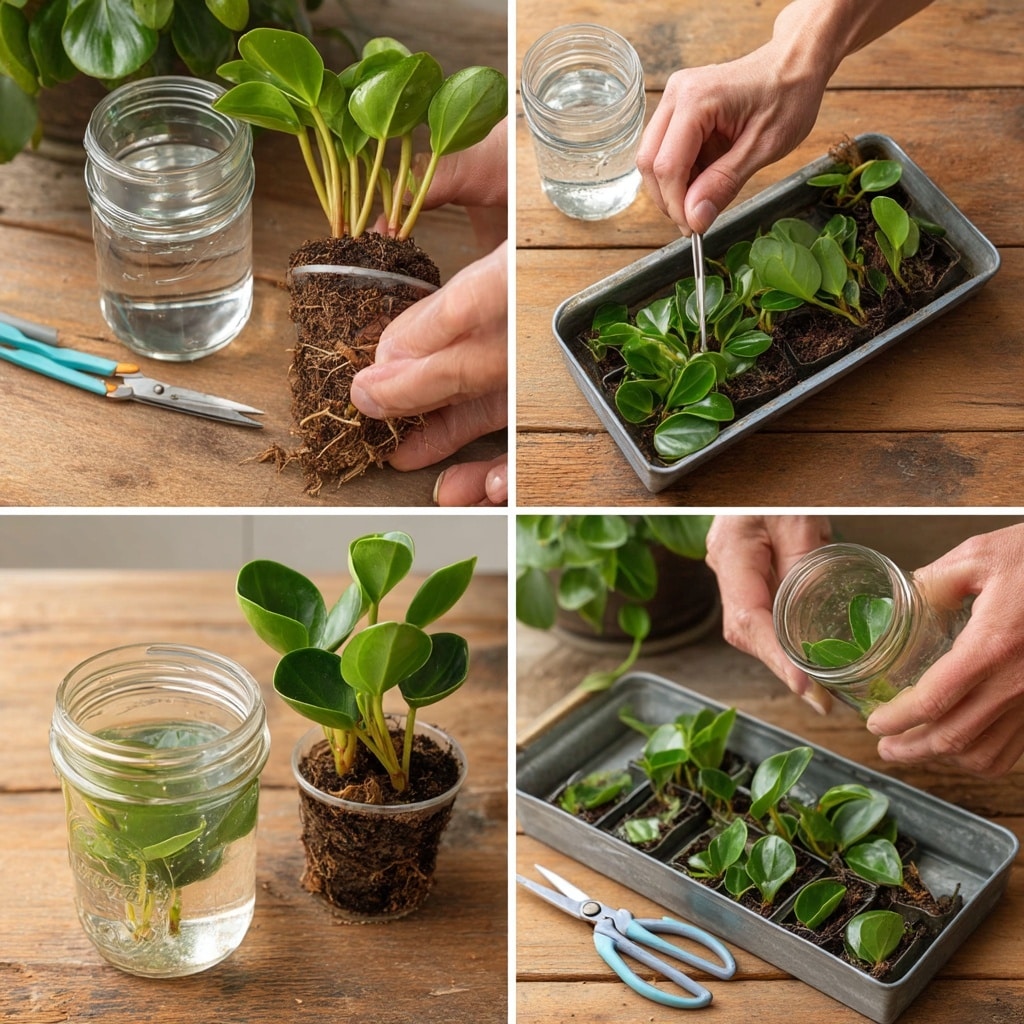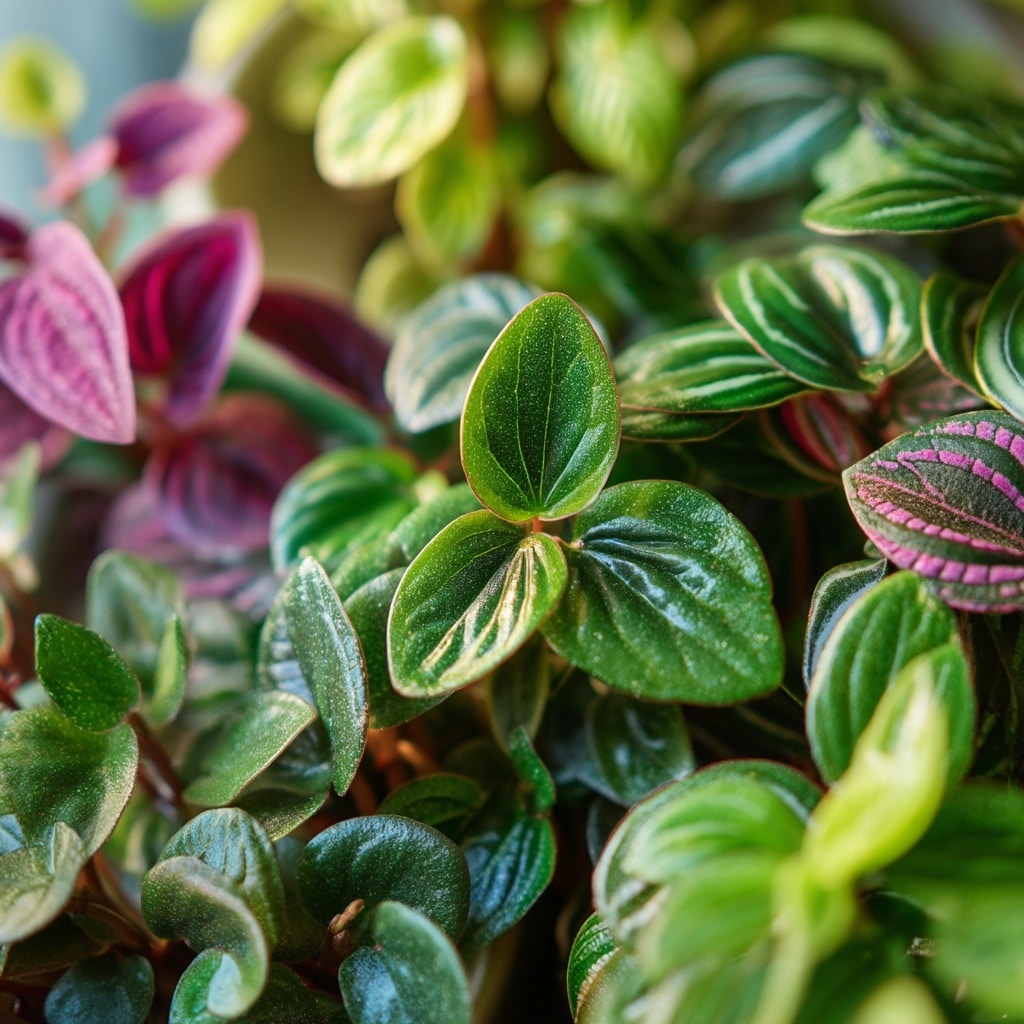Plant lovers searching for an easy, low-maintenance addition to their indoor space will find peperomia to be a perfect match. With over a thousand species in its genus, this tropical houseplant offers a wide variety of leaf shapes, sizes, and colors, making it a popular choice for shelves, desktops, and windowsills. Originally from rainforest environments, the peperomia has adapted well to life indoors, thriving in containers and requiring minimal care. Whether you’re a seasoned gardener or just starting your indoor plant journey, peperomia brings beauty and simplicity together in one resilient little plant.
Table of Contents
Peperomia Foliage Types
One of the most striking features of this versatile plant is its foliage. Unlike many other indoor plants, peperomia is grown primarily for its leaves, not its flowers. Each species showcases a unique blend of texture, color, and shape, making it an eye-catching plant even in small spaces.
Most peperomia varieties have thick, fleshy leaves that act as water reservoirs, a trait that supports their drought-tolerant nature. Depending on the species, leaves can range from the size of a fingernail to nearly the size of a baseball. Common leaf shapes include heart-shaped, oval, and teardrop, often with a waxy or rippled surface.
Color is another area where this plant truly shines. While deep green is a classic look, many varieties also display variegated patterns in cream, white, silver, or even pink tones. Ripple peperomias, in particular, are known for their deeply textured and ruffled leaves that give them a decorative appeal. These foliage differences not only add visual interest but also allow for a customized indoor plant collection that reflects your personal style.
Flower Blooms on a Peperomia Plant
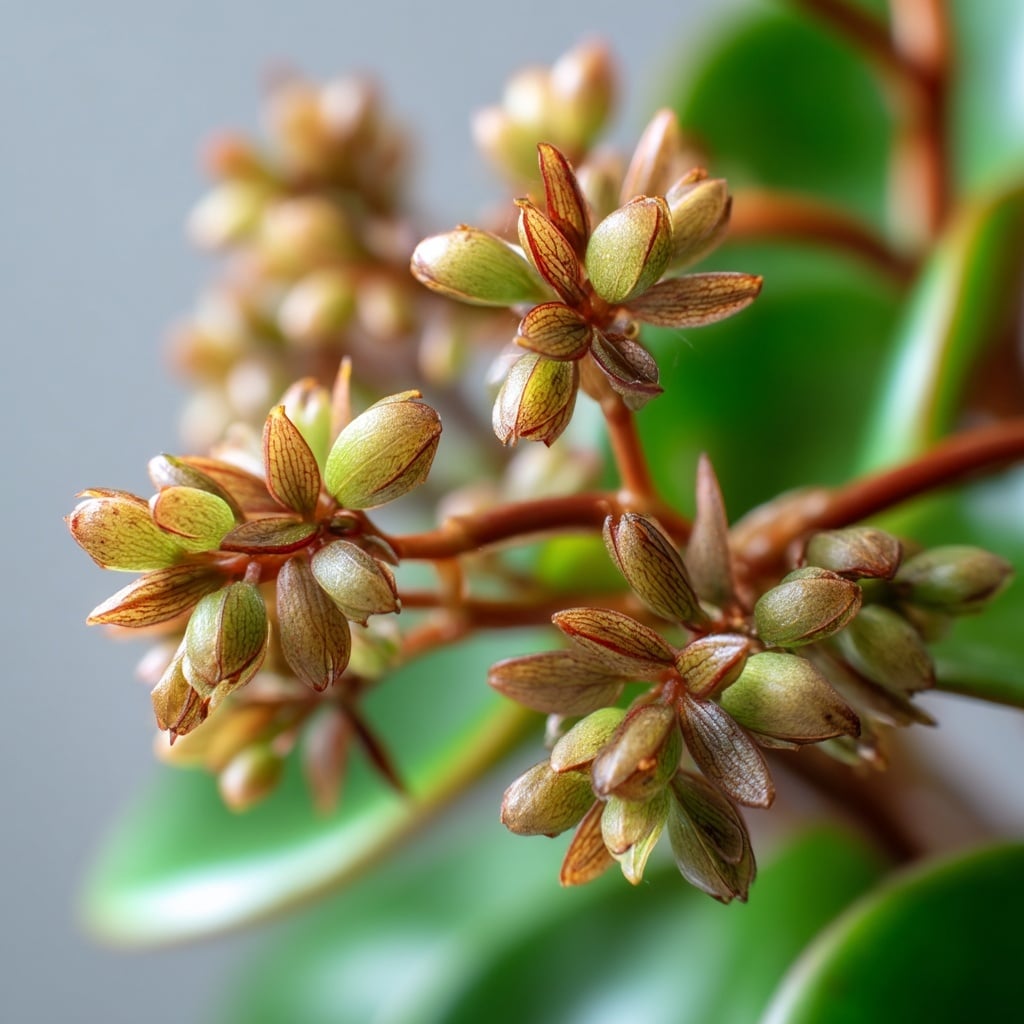
While peperomia may surprise you with a bloom now and then, this plant isn’t known for its flowers. In fact, the blooms it does produce are usually small, slender spikes that are green or brown and don’t look like traditional flowers. These understated blooms often go unnoticed or are removed entirely by houseplant enthusiasts.
Why remove them? Because peperomia puts a lot of energy into flowering—even though the display offers little aesthetic value. Pinching off these flower stalks helps redirect the plant’s energy back into producing fuller, more vibrant foliage. This not only enhances the look of the plant but also supports healthier overall growth.
If you’re looking for a plant that flowers dramatically indoors, peperomia isn’t the best fit. But if lush, unique leaves are more your style, this houseplant delivers every time.
Peperomia Plant Overview
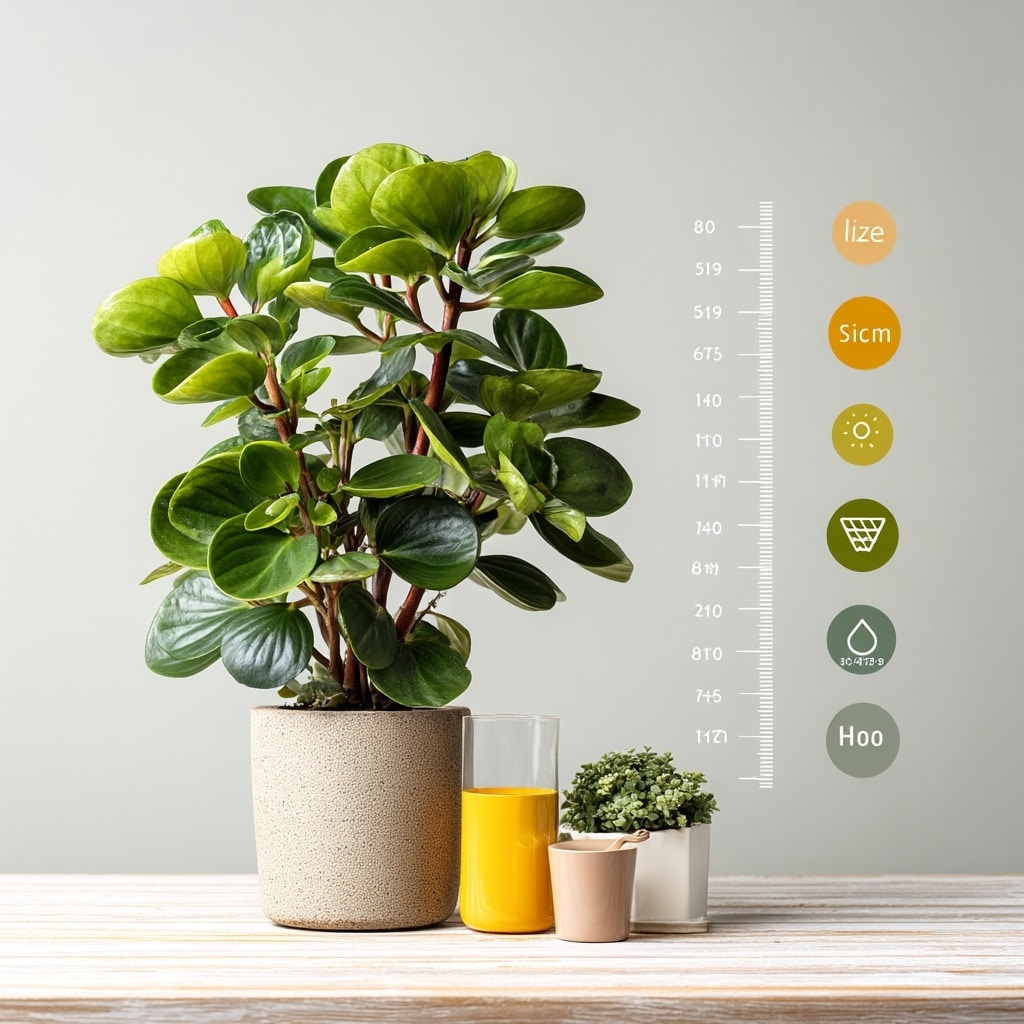
Before you bring this adaptable plant into your home, it helps to understand the basics of its care and characteristics. Peperomia is considered a compact, manageable houseplant that suits a variety of living spaces, from cozy apartments to larger homes.
Here’s a quick breakdown of what to expect:
- Botanical Name: Peperomia
- Common Name: Peperomia
- Type: Houseplant
- Light Needs: Thrives in bright, indirect light but tolerates part shade
- Size Range: Grows between 2 to 36 inches tall and 4 to 18 inches wide
- Foliage Colors: Predominantly green with some varieties displaying blue-green, silver, or variegated patterns
- Flower Color: Typically green or brown (non-showy)
- Special Features: Drought tolerant, low maintenance, and pet-safe
- Propagation: Easy via leaf, stem cuttings, or division
- Ideal Use: Indoor plant, container gardens, terrariums
Whether you’re just beginning your houseplant journey or adding to a growing collection, this compact plant brings charm without demanding too much attention.
Where to Plant Peperomias Indoors
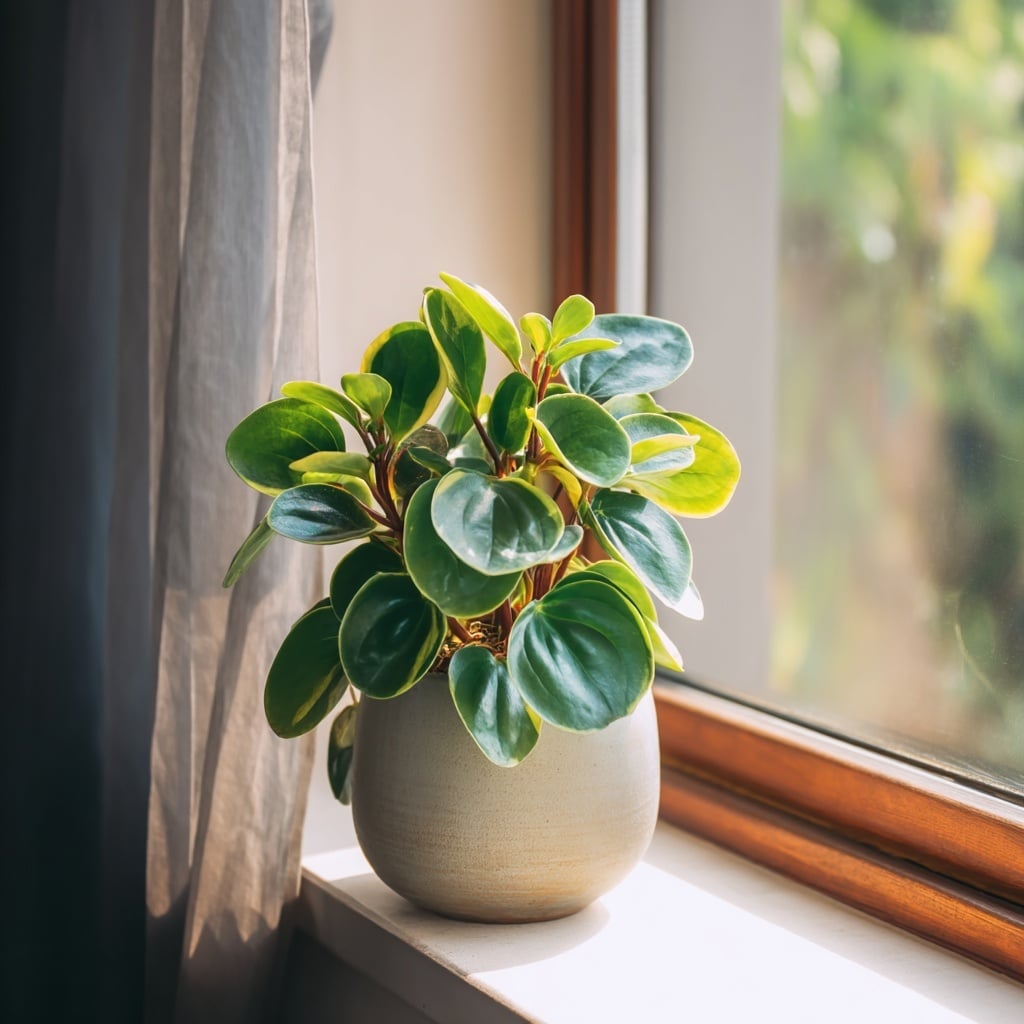
When choosing a spot to keep your peperomia plant, think bright but gentle. This adaptable houseplant does best in locations that mimic its natural habitat—warm, shaded forest floors. For indoor growing, aim for a spot that gets bright, indirect sunlight, such as near an east- or west-facing window.
Direct sun can scorch the leaves, especially in delicate or variegated varieties. A sheer curtain or placing the plant a few feet back from the window can help filter harsh rays. Because peperomia enjoys moderate humidity, kitchens and bathrooms often make excellent environments, as long as there’s natural light.
If your space has lower light, don’t worry. Many peperomia varieties tolerate shade quite well, making them a solid choice for offices, bedrooms, or areas away from windows. Just rotate the plant every couple of weeks to keep its shape balanced and foliage full.
No matter where you place it, this easygoing plant adds beauty and texture to your indoor garden without fuss.
Peperomia Plant Care Tips

🌤 Light
Peperomia is a flexible plant that adjusts well to various indoor lighting conditions. Ideally, it thrives in bright, indirect light—similar to the dappled light of its native forest environment. While some thick-leaved varieties can tolerate a bit of sun, prolonged direct exposure can cause leaf burn.
For best results, place the plant near an east- or west-facing window. If your peperomia starts leaning, it’s reaching for light—just rotate the pot weekly to encourage even growth. In low-light areas, opt for varieties with smaller, darker leaves, which tend to adapt better to shade.
Soil and Water
To keep your peperomia healthy, plant it in a well-draining soil mix. A combination of potting soil with perlite or orchid bark works well. Avoid dense or overly rich soils that retain too much moisture—these can lead to root rot, which is a common issue for this otherwise hardy plant.
Water only when the top inch of soil feels dry. Like many semi-succulent houseplants, peperomia prefers to dry out slightly between waterings. Overwatering is one of the fastest ways to harm this plant, so err on the side of less rather than more.
Temperature and Humidity
Peperomia’s tropical origins mean it appreciates warmth and moderate humidity. Aim for temperatures between 60°F and 80°F—comfortable for both you and your plant. Although the ideal humidity hovers around 40% to 50%, most peperomias will still perform well in drier indoor air.
If your space is particularly dry, group it with other indoor plants, use a pebble tray, or consider a small humidifier nearby to keep this plant happy.
Fertilizer
This unfussy plant doesn’t need constant feeding, but a balanced liquid houseplant fertilizer can help promote steady growth. Apply it every two to four weeks during the growing season (spring and summer). Reduce to monthly or pause altogether in fall and winter when the plant is dormant.
Always dilute the fertilizer to half strength unless the product label suggests otherwise—too much can do more harm than good.
Pruning
If your peperomia starts to look leggy or uneven, a quick trim can encourage bushier growth. Use clean, sharp scissors to snip just above a leaf node. The good news? Any healthy clipping you remove can be used to propagate a new plant!
Regular pruning also helps redirect the plant’s energy toward its lush foliage instead of unproductive stems.
Potting and Repotting
Peperomias like to be a bit snug in their pots. Unlike fast-growing houseplants, this plant has a relatively compact root system and grows well in small containers. Only repot when absolutely necessary—typically every two to three years.
When you do repot, choose a container just one size up and make sure it has drainage holes. Avoid overly large pots, as excess soil can hold water and increase the risk of root rot. Keeping this plant slightly root-bound actually supports better foliage development.
Pests and Problems
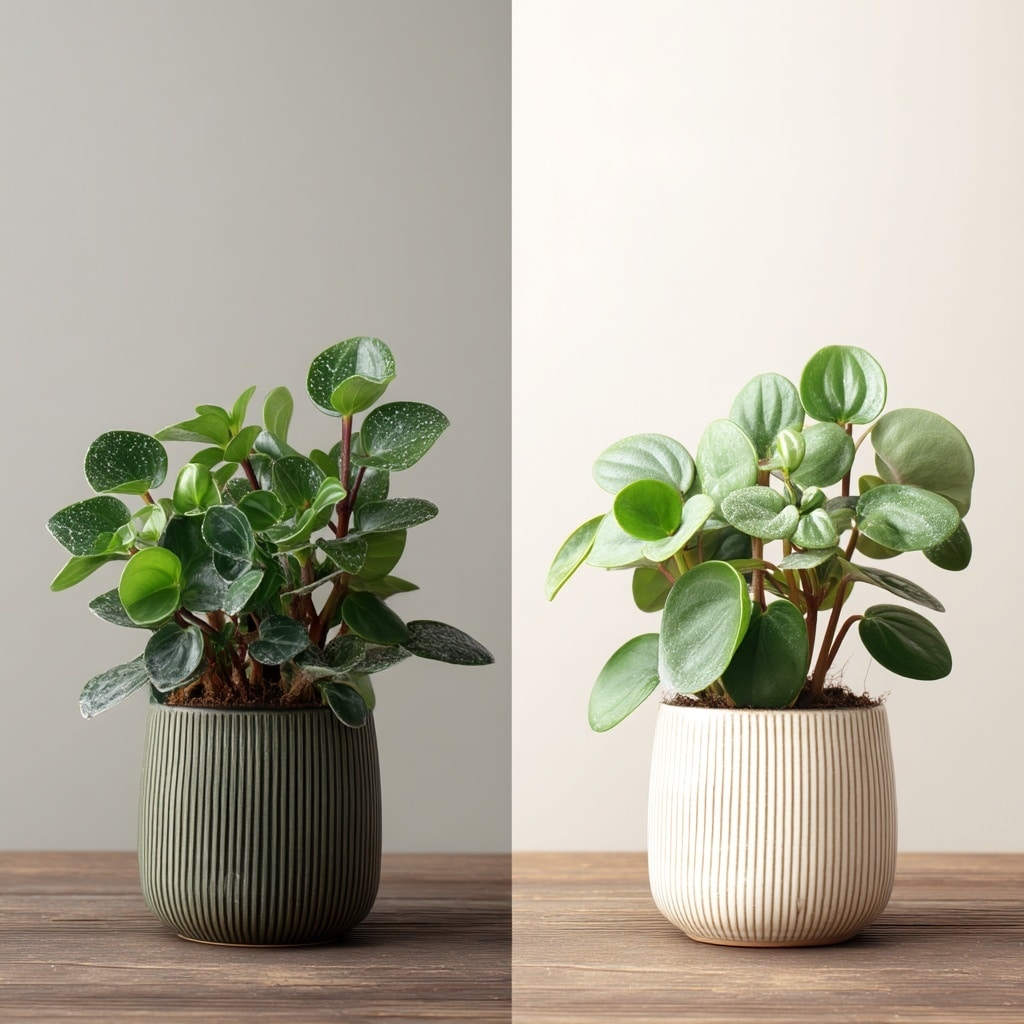
One of the best things about growing a peperomia plant is how rarely it suffers from serious pest issues. That said, it’s still wise to keep an eye out for a few common houseplant intruders—especially if you’ve recently brought home a new plant.
Watch for signs of:
- Mealybugs – White, cottony clumps on leaves or stems
- Spider mites – Fine webbing and yellow speckling on the foliage
- Whiteflies – Tiny white insects that scatter when the plant is moved
If you notice pests, isolate the affected plant immediately to prevent spread. Wipe the leaves gently with a damp cloth and treat with neem oil or insecticidal soap. Make sure to continue treatment weekly until the pests are gone.
Also, avoid overwatering, as soggy soil can lead to root rot—one of the most common problems for this plant. Ensure the pot has proper drainage and allow the soil to dry out between waterings.
By maintaining good air circulation and inspecting your plant regularly, you can prevent most issues before they become serious.
How to Propagate a Peperomia Plant

One of the many reasons peperomia is a favorite among indoor gardeners is how easily this plant can be propagated. Whether you’re looking to multiply your collection or share with a friend, growing new peperomia plants from cuttings is simple and rewarding.
✂️ Propagation by Stem Cuttings
For most varieties, stem cuttings are the easiest method:
- Choose a healthy stem with a few mature leaves.
- Using clean scissors, cut just below a node (where a leaf joins the stem).
- Remove the lower leaves, leaving one or two at the top.
- Stick the cutting into moist potting mix, ideally a blend that drains well.
- Keep the soil slightly moist and place the plant in bright, indirect light.
In a few weeks, roots will begin to develop, and you’ll notice new leaf growth.
Propagation by Leaf Cuttings
For stemless types like ripple peperomia, leaf propagation is just as effective:
- Take a healthy leaf with a bit of its stem attached.
- Insert the stem tip directly into moist soil, or lay the whole leaf flat with a small cut along the vein.
- Mist lightly and cover the container with plastic to maintain humidity.
- Within a few weeks, tiny plant starts will appear at the cut site.
No rooting hormone is needed for peperomia, which makes propagation beginner-friendly. It’s a cost-effective and fun way to expand your plant family.
Popular Peperomia Plant Varieties
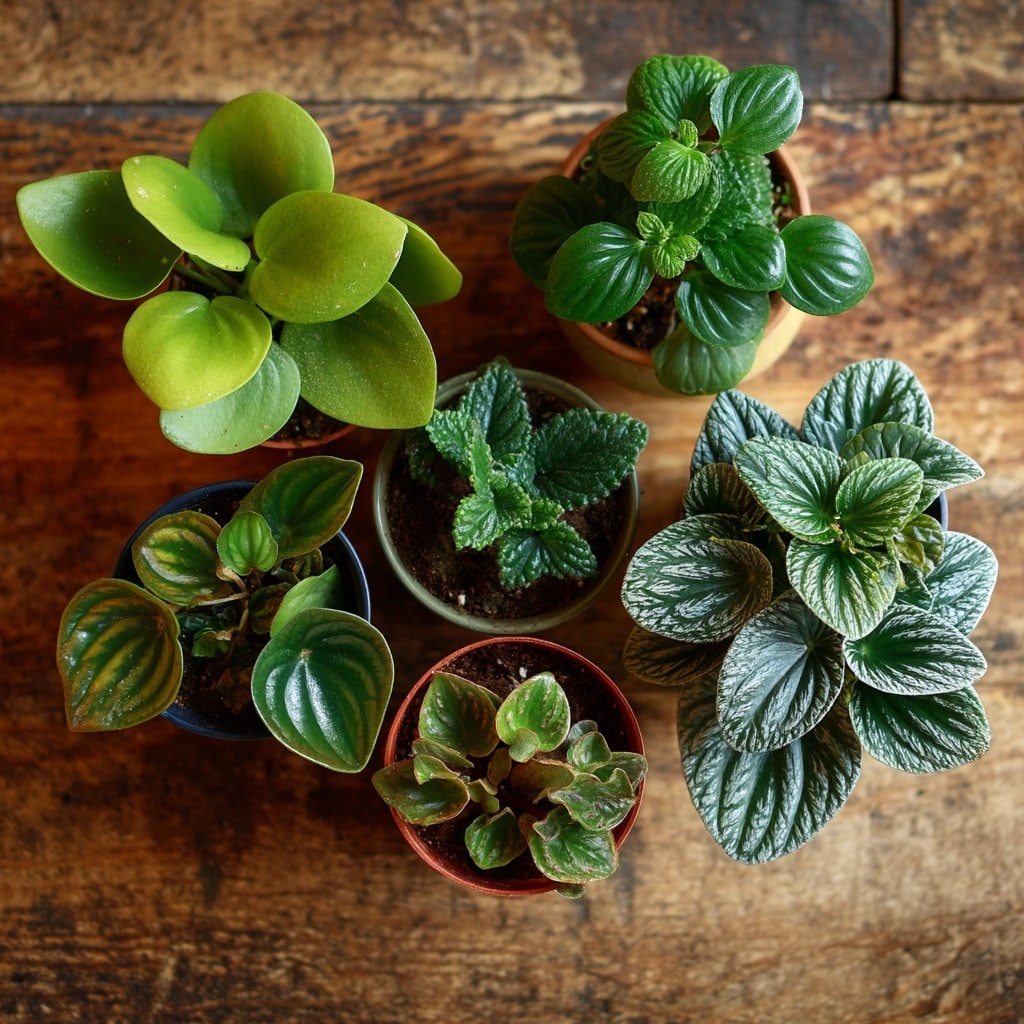
With over 1,000 recorded species, peperomia offers plenty of options for every type of indoor plant enthusiast. From tiny tabletop accents to bold, textured foliage, these varieties bring personality and charm to any indoor garden.
Here are some standout types to consider:
Japanese Peperomia (Peperomia japonica)
- A compact plant with small, oval, rippled leaves
- Features pinkish-red stems that contrast beautifully with deep green foliage
- Ideal for small pots and terrariums
‘Jayde’ Peperomia (Peperomia polybotrya ‘Jayde’)
- Glossy, teardrop-shaped leaves up to 4 inches across
- Grows upright, reaching up to 18 inches tall
- An excellent structural plant for shelf styling
Ripple Peperomia (Peperomia caperata)
- Known for deeply crinkled, waxy leaves
- Varieties include ‘Red Luna’ (reddish foliage), ‘Metallica’ (silver streaks), and ‘Emerald Ripple’ (classic green)
- A textured plant perfect for contrast in mixed arrangements
Red-Edge Peperomia (Peperomia clusiifolia ‘Rainbow’)
- Thick succulent leaves with cream, green, and gray-green tones
- Leaf edges and stems have a striking red hue
- Often called baby rubber plant due to its thick foliage
Variegated Baby Rubber Plant (Peperomia obtusifolia ‘Variegata’)
- Upright grower with large, round, glossy leaves
- Features gold and green variegation for a bright pop
- Very low maintenance, ideal for beginners
Teardrop Peperomia (Peperomia orba)
- A dwarf plant that stays compact at about 6 inches tall
- Cultivars like ‘Pixie’ and ‘Princess Astrid’ are easy to find
- Great for desks, windowsills, and tight corners
Silverleaf Peperomia (Peperomia griseoargentea)
- Leaves shimmer with silvery tones and bold green veins
- Rippled texture adds visual depth
- Remains compact, around 6 inches tall
Watermelon Peperomia (Peperomia argyreia)
- Gets its name from its silver and green striped leaves
- Resembles the rind of a watermelon
- A popular plant choice for Instagram-worthy foliage displays
Frequently Asked Questions About the Peperomia Plant
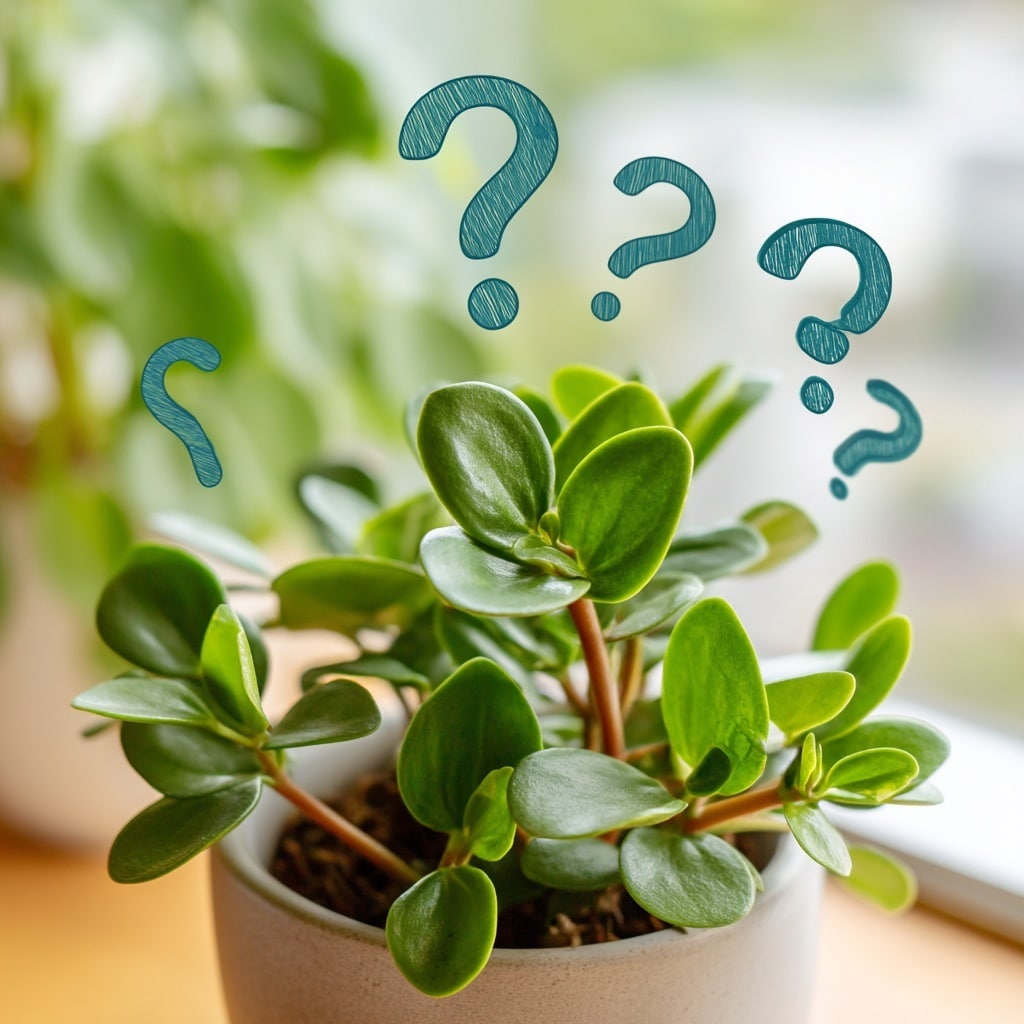
🕒 How long does a peperomia plant live?
With proper care, a peperomia plant can live anywhere from 5 to 10 years—or even longer. Since there are so many species, longevity may vary slightly, but most houseplant varieties are known for their resilience and long-term growth indoors.
🌿 Is peperomia a good beginner plant?
Absolutely. Peperomia is one of the best indoor plant choices for beginners. It tolerates low light, infrequent watering, and even a bit of neglect. Its compact size and slow growth make it easy to manage, and most varieties bounce back quickly from common mistakes.
🐾 Is peperomia safe for pets?
Yes! One of the many perks of owning a peperomia plant is that it’s non-toxic to cats and dogs. It’s a safe addition to pet-friendly homes, though it’s always best to discourage nibbling to avoid any digestive upset.
🌱 Why is my peperomia plant dropping leaves?
Leaf drop usually points to overwatering, poor drainage, or sudden environmental changes. This plant prefers to dry out between waterings and dislikes sitting in soggy soil. Make sure your container drains well and that the plant isn’t exposed to cold drafts or direct sunlight.
💧 How often should I water a peperomia?
Water your peperomia plant only when the top inch of soil feels dry. Overwatering is a common issue, so always test the soil before watering. In winter, reduce watering frequency as the plant’s growth naturally slows.
Conclusion
Peperomia is the kind of plant that makes indoor gardening easy and rewarding. With its stunning variety of leaf textures and colors, low-maintenance care routine, and compact size, it’s the perfect choice for homes, apartments, and even offices. Whether you’re drawn to the ripple effect of Peperomia caperata or the striped charm of the watermelon variety, there’s a peperomia plant to fit your style.
By following simple guidelines for light, water, and potting, your peperomia can thrive for years. And with easy propagation, you can multiply your collection or share with fellow plant lovers. If you’re looking for a reliable, pet-friendly houseplant that doesn’t require a green thumb, peperomia is an excellent pick.

